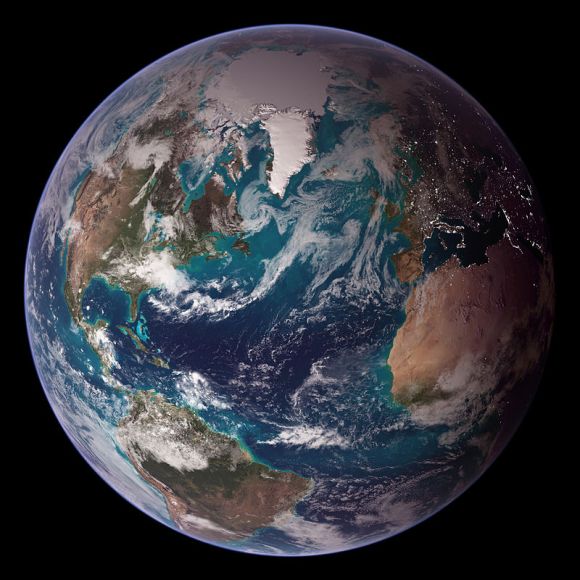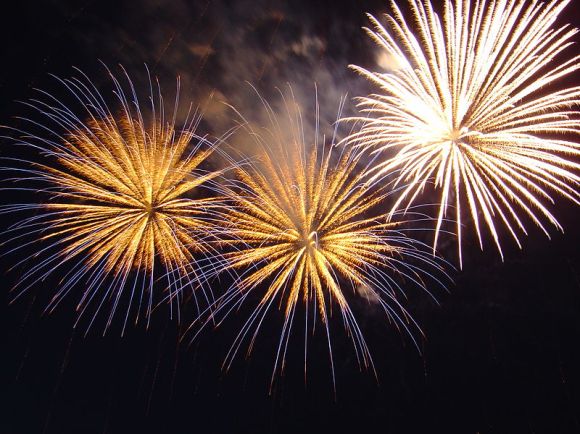
Have you ever wished you had just a little more time? Well, you should have been more specific!
Everyone knows about leap years. Once every four years, an extra day is added to the end of February so that the calendar year synchronizes with the astronomical or seasonal year. But, have you ever heard of a leap second?
A leap second occurs when an extra second added to astronomical time is necessary to keep in line with the universal atomic clock. Astronomical time was the universal standard until the atomic clock came into use in 1958. Then, it was discovered that irregularities in the earth’s rotation meant the two standards of time were out of sync.
▼ Nobody’s perfect. Not even the Earth.
Leap seconds have been used sparingly since 1972. The latest one was about one and a half years ago on July 1st, 2015. The International Earth Rotation and Reference Systems Service (IERS) in France makes the final call, and the National Institute of Information and Communications Technology (NITS) in Japan complies.
It has been determined that the next leap second will take place on December 31st, 2016 at 11:59 p.m. Accounting for the time difference, it will take place in Japan on January 1st, 2017.
▼ That means a whole extra second of fireworks!
That also gives you another second to eat Yoshinoya, study Japanese, wait for the train, or play Pokémon GO. Use it wisely!
References: Wikipedia (Leap Year), IERS
Featured images: Wikimedia Commons/Postelwijn
Images: Wikimedia Commons/NASA, Wikimedia Commons/Ondrejk
[ Read in Japanese ]



 Japan may add Japanese language proficiency, lifestyle classes to permanent foreign resident requirements
Japan may add Japanese language proficiency, lifestyle classes to permanent foreign resident requirements Disillusionment at Tsukiji’s tourist-target prices led us to a great ramen restaurant in Tokyo
Disillusionment at Tsukiji’s tourist-target prices led us to a great ramen restaurant in Tokyo A Japanese dating app matched our bachelorette with a Buddhist monk, and she learned some things
A Japanese dating app matched our bachelorette with a Buddhist monk, and she learned some things Starbucks Japan releases new zodiac chilled cup drink for 2026
Starbucks Japan releases new zodiac chilled cup drink for 2026 The 10 best Japanese hot spring resorts locals want to go back to again and again
The 10 best Japanese hot spring resorts locals want to go back to again and again Japan may add Japanese language proficiency, lifestyle classes to permanent foreign resident requirements
Japan may add Japanese language proficiency, lifestyle classes to permanent foreign resident requirements Disillusionment at Tsukiji’s tourist-target prices led us to a great ramen restaurant in Tokyo
Disillusionment at Tsukiji’s tourist-target prices led us to a great ramen restaurant in Tokyo A Japanese dating app matched our bachelorette with a Buddhist monk, and she learned some things
A Japanese dating app matched our bachelorette with a Buddhist monk, and she learned some things Starbucks Japan releases new zodiac chilled cup drink for 2026
Starbucks Japan releases new zodiac chilled cup drink for 2026 The 10 best Japanese hot spring resorts locals want to go back to again and again
The 10 best Japanese hot spring resorts locals want to go back to again and again 7-Eleven Japan starts new temporary luggage storage service in over 300 branches
7-Eleven Japan starts new temporary luggage storage service in over 300 branches What’s it really like to climb Mt Fuji?
What’s it really like to climb Mt Fuji? Smell like a Demon Slayer (or a Demon) with new line of Kimetsu no Yaiba fragrances
Smell like a Demon Slayer (or a Demon) with new line of Kimetsu no Yaiba fragrances KFC will straight-up sell you a bag of fried chicken skin in Indonesia
KFC will straight-up sell you a bag of fried chicken skin in Indonesia Sanrio brings some smiles to Evangelion with new collaboration merch line【Photos】
Sanrio brings some smiles to Evangelion with new collaboration merch line【Photos】 Starbucks teams up with 166-year-old Kyoto doll maker for Year of the Horse decorations【Photos】
Starbucks teams up with 166-year-old Kyoto doll maker for Year of the Horse decorations【Photos】 Tokyo’s Tsukiji sushi neighborhood asks tour groups to stay away for the rest of the month
Tokyo’s Tsukiji sushi neighborhood asks tour groups to stay away for the rest of the month Street Fighter Hadouken Churros to be launched and eaten in Tokyo, Okami pudding on offer too
Street Fighter Hadouken Churros to be launched and eaten in Tokyo, Okami pudding on offer too Japanese woman mistaken for bear
Japanese woman mistaken for bear Return of Totoro sequel short anime announced for Ghibli Park
Return of Totoro sequel short anime announced for Ghibli Park Is this the most relaxing Starbucks in Japan?
Is this the most relaxing Starbucks in Japan? Starbucks on a Shinkansen bullet train platform: 6 tips for using the automated store in Japan
Starbucks on a Shinkansen bullet train platform: 6 tips for using the automated store in Japan Japan’s human washing machines will go on sale to general public, demos to be held in Tokyo
Japan’s human washing machines will go on sale to general public, demos to be held in Tokyo Japanese train company is letting fans buy its actual ticket gates for their homes
Japanese train company is letting fans buy its actual ticket gates for their homes Is China’s don’t-go-to-Japan warning affecting tourist crowds in Tokyo’s Asakusa neighborhood?
Is China’s don’t-go-to-Japan warning affecting tourist crowds in Tokyo’s Asakusa neighborhood? Starbucks Japan unveils new Christmas goods and a rhinestone tumbler that costs 19,500 yen
Starbucks Japan unveils new Christmas goods and a rhinestone tumbler that costs 19,500 yen Tokyo considering law requiring more trash cans following litter increase in heavily touristed area
Tokyo considering law requiring more trash cans following litter increase in heavily touristed area Nintendo’s Kirby now delivering orders at Kura Sushi restaurants, but not in Japan
Nintendo’s Kirby now delivering orders at Kura Sushi restaurants, but not in Japan Tokyo event lets you travel back in time, for free, to celebrate 100 years since Showa era start
Tokyo event lets you travel back in time, for free, to celebrate 100 years since Showa era start Survey asks foreign tourists what bothered them in Japan, more than half gave same answer
Survey asks foreign tourists what bothered them in Japan, more than half gave same answer Japan’s deadliest food claims more victims, but why do people keep eating it for New Year’s?
Japan’s deadliest food claims more victims, but why do people keep eating it for New Year’s? We deeply regret going into this tunnel on our walk in the mountains of Japan
We deeply regret going into this tunnel on our walk in the mountains of Japan Studio Ghibli releases Kodama forest spirits from Princess Mononoke to light up your home
Studio Ghibli releases Kodama forest spirits from Princess Mononoke to light up your home Major Japanese hotel chain says reservations via overseas booking sites may not be valid
Major Japanese hotel chain says reservations via overseas booking sites may not be valid Put sesame oil in your coffee? Japanese maker says it’s the best way to start your day【Taste test】
Put sesame oil in your coffee? Japanese maker says it’s the best way to start your day【Taste test】 The top 10 annoying foreign tourist behaviors on trains, as chosen by Japanese people【Survey】
The top 10 annoying foreign tourist behaviors on trains, as chosen by Japanese people【Survey】 No more using real katana for tourism activities, Japan’s National Police Agency says
No more using real katana for tourism activities, Japan’s National Police Agency says Starbucks Japan reveals new sakura drinkware collection, inspired by evening cherry blossoms
Starbucks Japan reveals new sakura drinkware collection, inspired by evening cherry blossoms 7-Eleven Japan starts new temporary luggage storage service in over 300 branches
7-Eleven Japan starts new temporary luggage storage service in over 300 branches What’s it really like to climb Mt Fuji?
What’s it really like to climb Mt Fuji? Smell like a Demon Slayer (or a Demon) with new line of Kimetsu no Yaiba fragrances
Smell like a Demon Slayer (or a Demon) with new line of Kimetsu no Yaiba fragrances KFC will straight-up sell you a bag of fried chicken skin in Indonesia
KFC will straight-up sell you a bag of fried chicken skin in Indonesia Sanrio brings some smiles to Evangelion with new collaboration merch line【Photos】
Sanrio brings some smiles to Evangelion with new collaboration merch line【Photos】 Uniqlo opens its first-ever cafe at newly revamped Ginza store
Uniqlo opens its first-ever cafe at newly revamped Ginza store Six non-traditional osechi New Year’s meals in Japan
Six non-traditional osechi New Year’s meals in Japan Watch how to make one of Japan’s elite restaurant’s desserts
Watch how to make one of Japan’s elite restaurant’s desserts Secret lunch spot in Tokyo’s Muji Hotel is a hidden gem that few people know about
Secret lunch spot in Tokyo’s Muji Hotel is a hidden gem that few people know about What would convince Japanese people to live in a home where there’d been a death or “accident?”
What would convince Japanese people to live in a home where there’d been a death or “accident?” Tokyo’s Tsukiji sushi neighborhood asks tour groups to stay away for the rest of the month
Tokyo’s Tsukiji sushi neighborhood asks tour groups to stay away for the rest of the month How to speak Japanese like a gyaru【2024 edition】
How to speak Japanese like a gyaru【2024 edition】 More Than a Capsule Stay: Why Solo Travelers Choose “global cabin Yokohama Chinatown”
More Than a Capsule Stay: Why Solo Travelers Choose “global cabin Yokohama Chinatown”
Leave a Reply